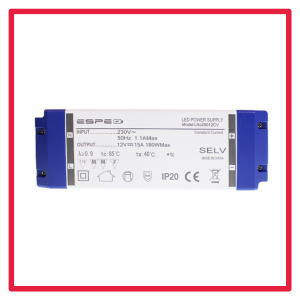PFC correction in LED power supplies: efficiency and energy stability

Modern LED Lighting: Quality, Standards and Benefits
LED lighting has gained immense popularity, which has necessitated the introduction of regulations regarding the quality of their operation. Each LED light source works with a switched-mode power supply, which requires defined operating conditions to prevent interference with other electronic devices and a negative impact on the power grid. It is therefore essential that LED power supplies meet the appropriate standards to ensure their safe and efficient operation.
Power supplies for LED lighting must comply with standards such as EN55015 and EN61000-3-2, the first of which deals with the emission of conducted disturbances into the electrical grid and emitted disturbances. The second regulates the permissible harmonic content. These standards enforce the use of power supplies with built-in power factor correction (PFC) in units above 25 W. For power supplies above 25 W, the power factor must be at least 0.9, while for power up to 25 W the power factor must be greater than or equal to 0.5. These are standard values for switching power supplies.
The presence of a PFC equalizer is key to ensuring that the current drawn by the power supply has a pure sinusoidal shape, minimising interference with the power supply. The PFC equalizer is located at the input of the power supply and is responsible for even power consumption, preventing installation overloads, protection problems and large voltage drops. This is particularly important in large installations where multiple power supplies are connected to a single mains segment. Thanks to PFC systems, it is possible to maintain stable and efficient operation of the power supply network. Information about the presence of PFC in an LED power supply is usually given on the product label and in the data sheet, highlighting its importance and the benefits of its use.
